The Top 16 Most Sought-After Antique Dinnerware Pieces
There is something timeless about a well-made piece of antique dinnerware. Many of these sets were crafted with care and have remained valuable through the years. They often carry stories, patterns, and details that are hard to find now. Collectors enjoy the hunt as much as the display. If you appreciate beauty and history, these dinnerware pieces are worth a closer look.
This post may contain affiliate links, which helps keep this content free. Please read our disclosure for more info.
Spode Blue Italian
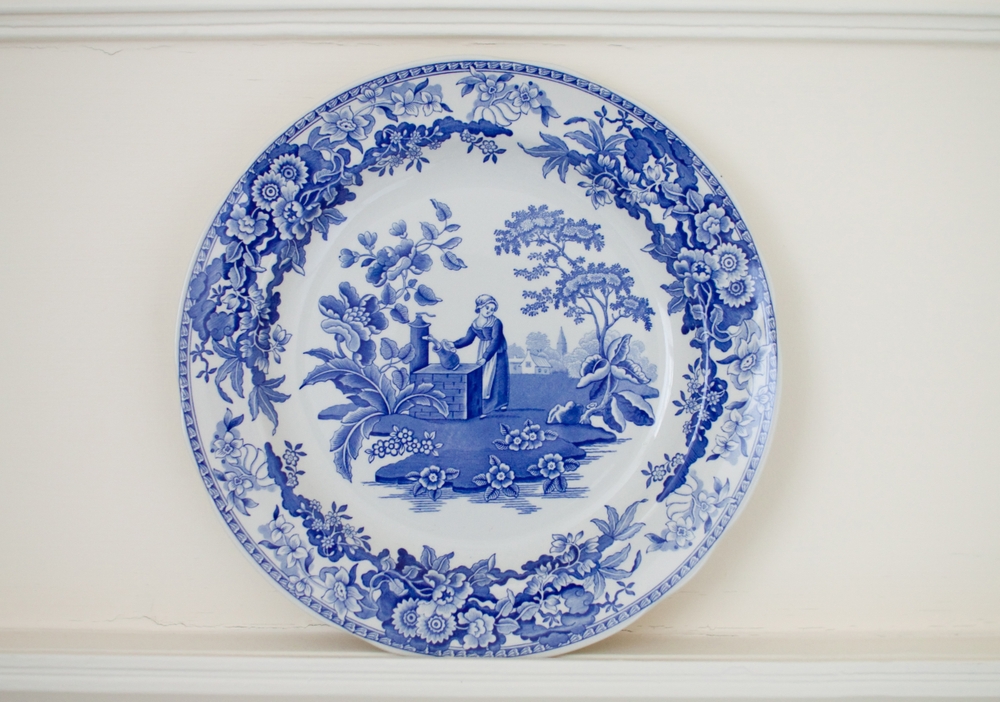
Spode Blue Italian was first released in 1816 and remains one of the most recognized patterns in antique dinnerware. The design features a rich blue landscape framed by a floral border, inspired by Italian countryside scenes. Its long production history and classic look make it popular with collectors. Many pieces are still in circulation, which keeps interest strong across generations.
Full sets in good condition can reach around $500 to $1,200, depending on age and completeness. Even single plates often sell for $20 to $50. The brand’s mark on the underside helps date the pieces more accurately. This pattern is still produced today, but older versions carry more value and charm.
Royal Doulton Bunnykins
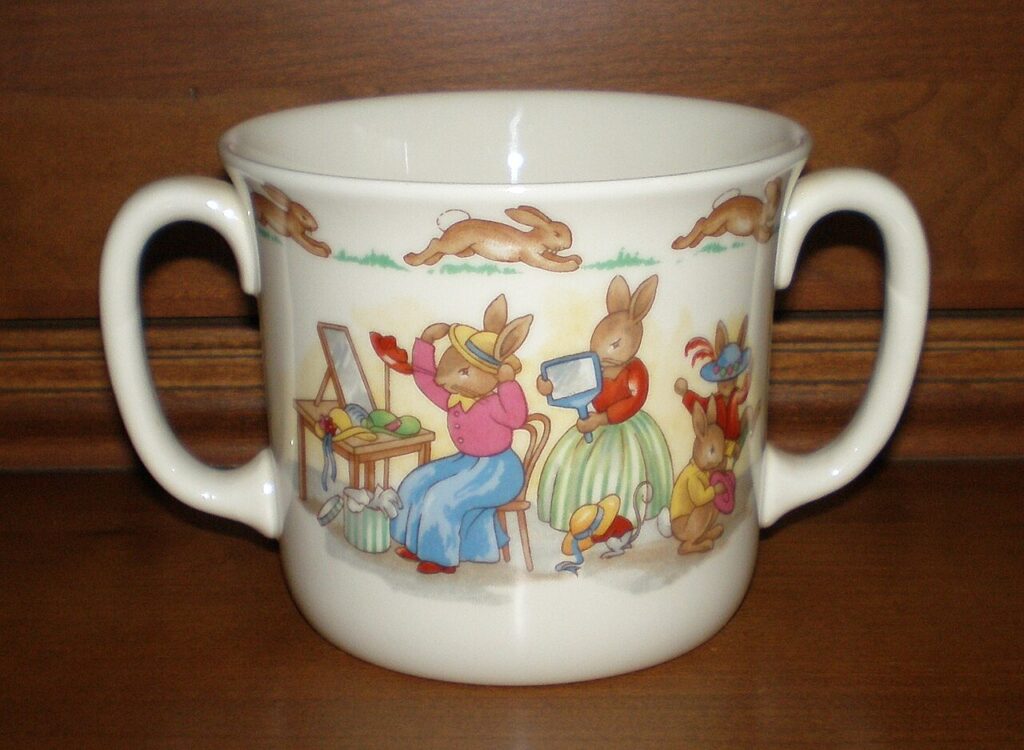
Royal Doulton introduced Bunnykins in the 1930s, and it quickly became a favorite for both children and collectors. The pieces feature charming rabbit scenes in village life, often found on bowls, cups, and plates. Early hand-painted versions are especially prized due to their detailed artwork. These were first created by Sister Mary Barbara Bailey, the daughter of Royal Doulton’s general manager.
Older Bunnykins dishes can fetch $100 to $300 each, while complete early sets bring higher prices. Later printed versions are less valuable but still collected. Look for backstamps to help identify the production era. These pieces are often passed down and remain popular for both their cuteness and their history.
Wedgwood Jasperware
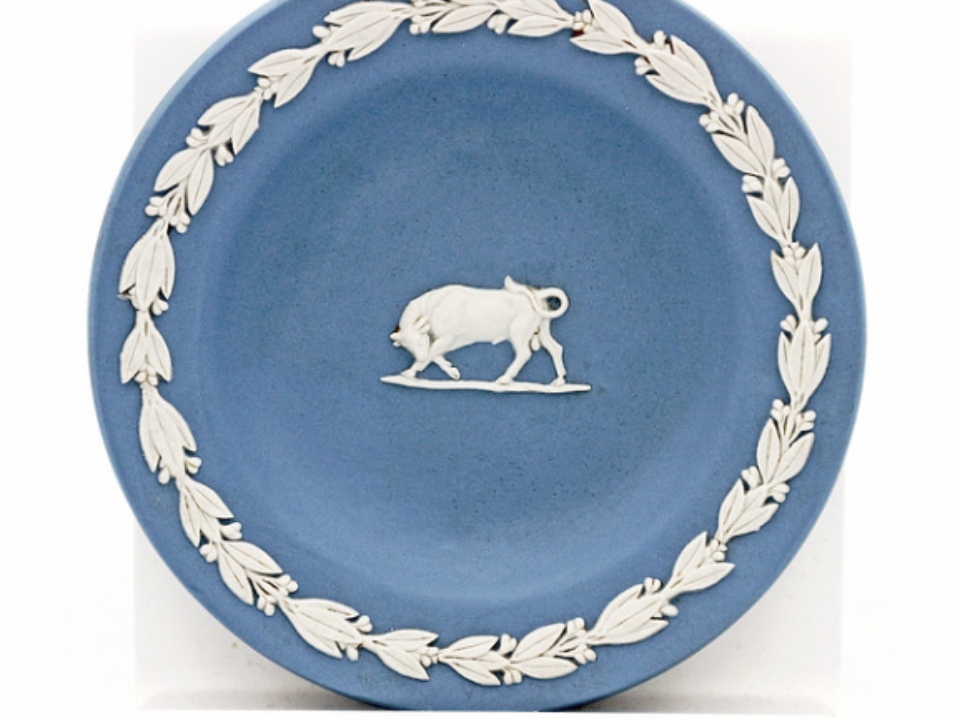
First made in the late 1700s, Wedgwood Jasperware stands out for its matte finish and classical white figures on colored backgrounds. Most commonly seen in pale blue, it also comes in green, black, and lilac. While not all pieces are dinnerware, plates, serving trays, and small teacups are highly collectible. The iconic style and fine details make it a centerpiece in many collections.
Smaller dishes can range from $50 to $200, while larger serving pieces may sell for $500 or more. Early pieces with impressed marks are especially valued. Though still produced, older items from the 19th century carry more appeal. Jasperware combines elegance with a timeless design that remains in demand.
Franciscan Desert Rose
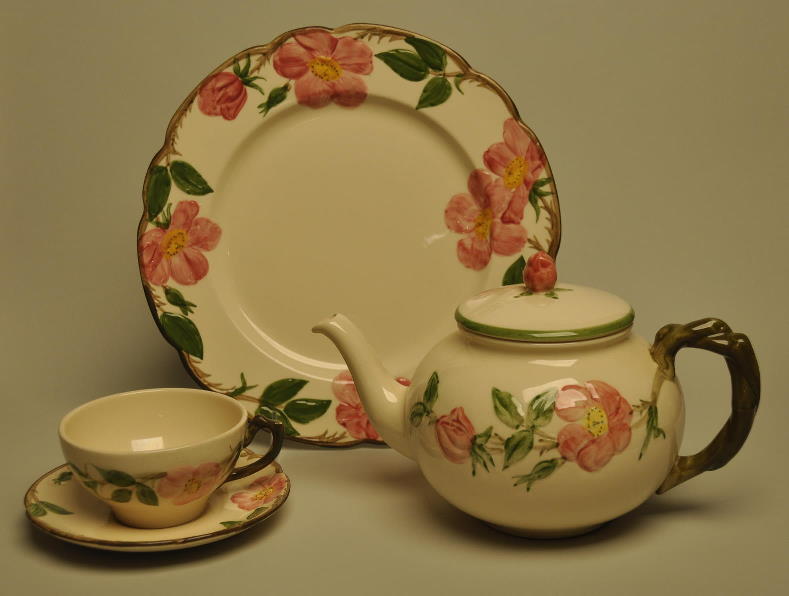
Franciscan Desert Rose was introduced in 1941 in California and became one of the best-selling patterns in American dinnerware. Its hand-painted pink roses and green leaves are easy to spot and widely loved. Production later moved to England and then to other countries, which affects the value. Earlier American-made versions are more valuable to collectors.
A full set in good condition can reach $400 to $900. Single plates often sell between $10 and $40 depending on age. Look for stamps that say Made in California for the older editions. Desert Rose remains a favorite for its bold floral pattern and nostalgic charm.
Haviland Limoges China
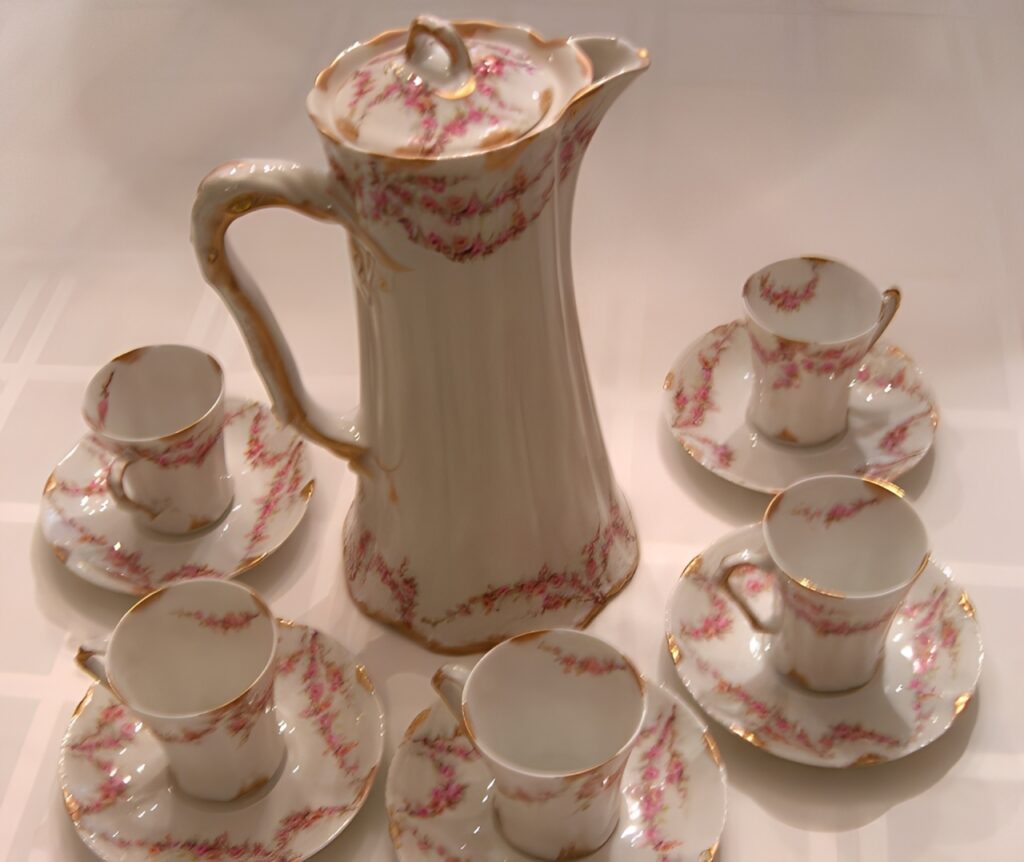
Haviland Limoges was first produced in the mid-1800s in France and quickly gained popularity for its fine porcelain. The patterns vary widely, but many feature delicate floral designs and gold trim. The quality and craftsmanship keep it in demand among collectors and antique lovers. Each piece is lightweight yet durable, making it a favorite for display and use.
Prices vary by pattern, with full sets reaching up to $2,000 or more. Individual plates can sell for $30 to $100. Pieces marked Haviland France and Haviland and Co. Limoges are from earlier runs and are more sought-after. This china adds elegance to any table or cabinet.
Meissen Blue Onion
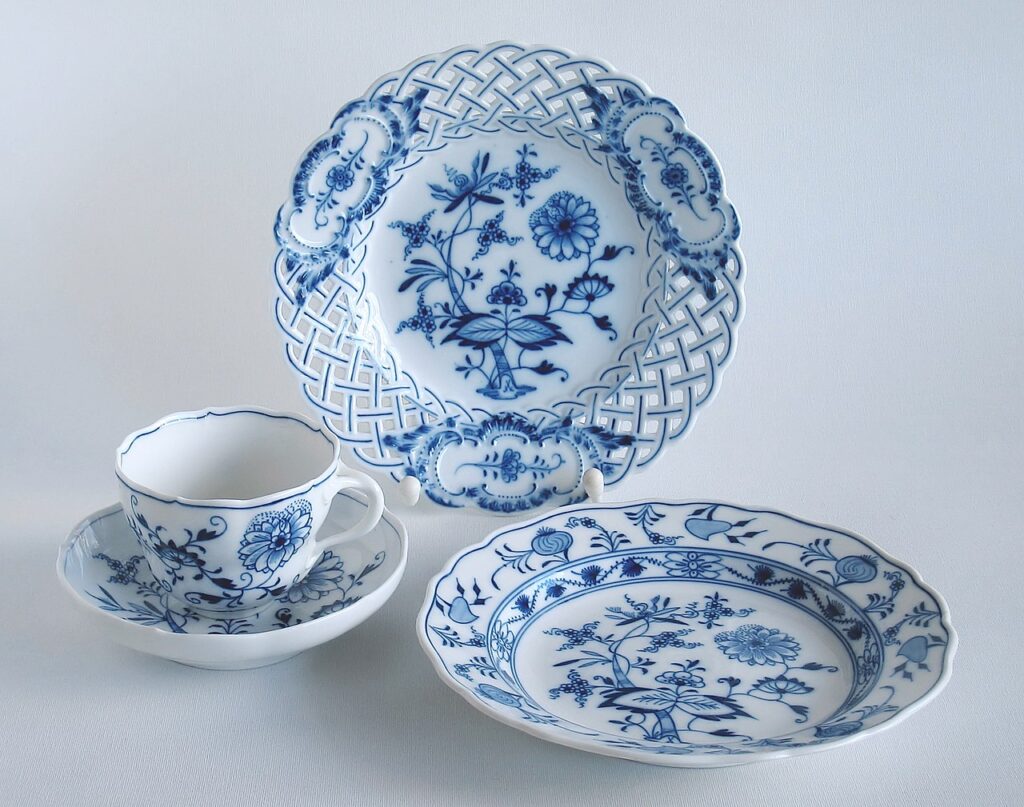
Meissen’s Blue Onion pattern was introduced in the 1700s and is considered one of the oldest continually produced porcelain designs. The blue pattern, inspired by Chinese motifs, was hand-painted onto fine white porcelain. It gained a reputation for both its durability and its decorative value. Original Meissen marks with crossed swords help identify authentic pieces.
A single dinner plate may sell for $150 to $400, while full sets go well beyond $3,000. Earlier hand-painted items are more valuable than later printed versions. The weight and finish of the porcelain also reflect its quality. Meissen Blue Onion remains a staple in European porcelain collecting.
Royal Copenhagen Flora Danica
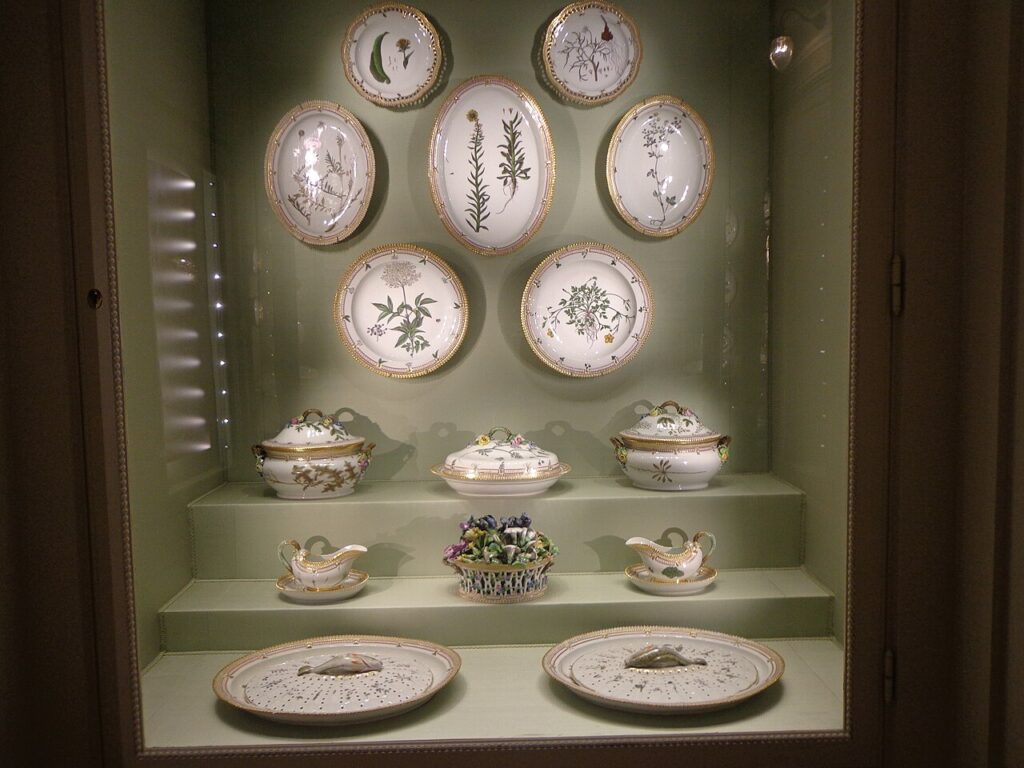
This pattern began in the late 1700s and was originally meant as a gift for Russian royalty. Each piece features detailed botanical illustrations of actual Danish plants, hand-painted with incredible care. Flora Danica is still made today, but early pieces from the 19th century are highly prized. The pattern reflects both art and science in a unique way.
Single plates can sell for $500 to over $1,000, while sets command even higher prices. Backstamps and artist signatures help confirm authenticity. Because of the fine work involved, it is often used more for display than dining. It is one of the most admired porcelain lines in the world.
Johnson Brothers Old Britain Castles
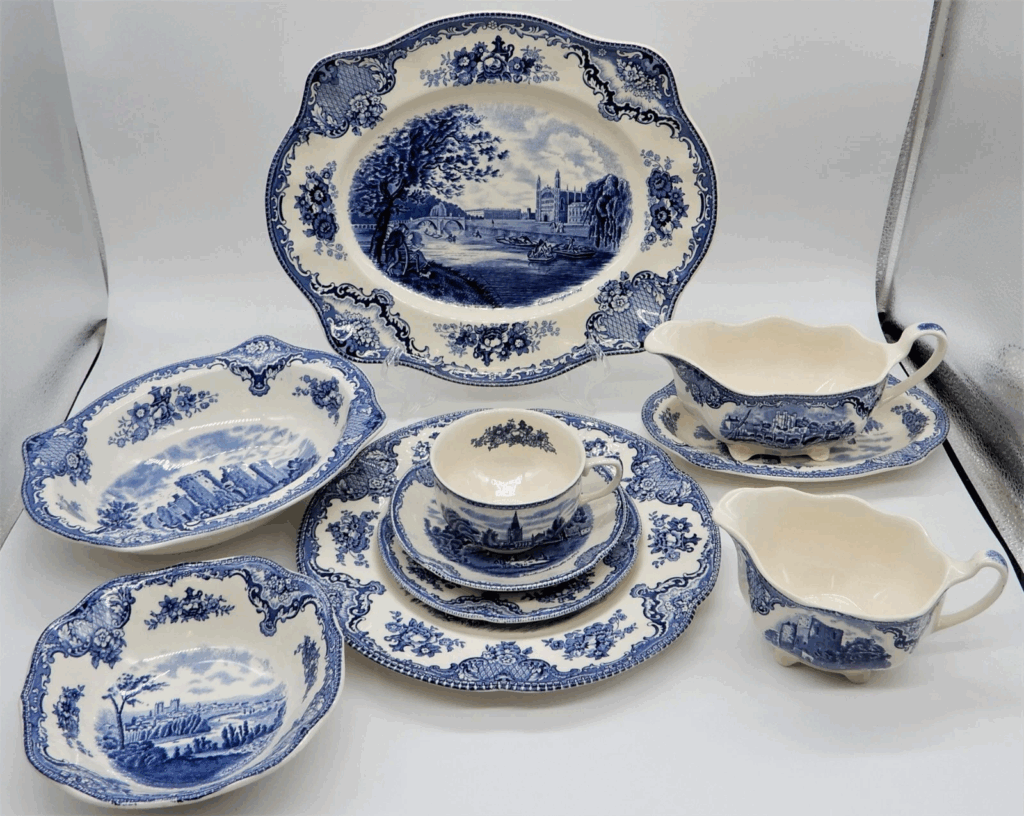
Released in the early 20th century, this pattern features scenic British castles in red, blue, or brown on white backgrounds. It became popular for both daily use and special occasions due to its detailed imagery. Collectors appreciate the historical themes and the variety of shapes and sizes available. The red version is often the most popular among collectors.
A complete set can sell for $300 to $700 depending on age and condition. Plates range from $10 to $50 each. Earlier marks include Made in England and help date the piece. It remains one of Johnson Brothers’ most recognizable patterns.
Noritake Azalea

Noritake Azalea was made in Japan between 1916 and 1941 and given as a premium item by the Larkin Company. The floral pattern features soft pink azaleas with gold trim on white porcelain. These pieces were often handed down through families and are still found in homes today. The original pattern was not sold in stores, which adds to its rarity.
Individual pieces can sell for $20 to $60, while full sets may reach $800 or more. Items marked Noritake with the M-in-wreath logo are part of the original run. Azalea is known for its delicate beauty and limited availability. Collectors often search for missing pieces to complete inherited sets.
Lenox Autumn
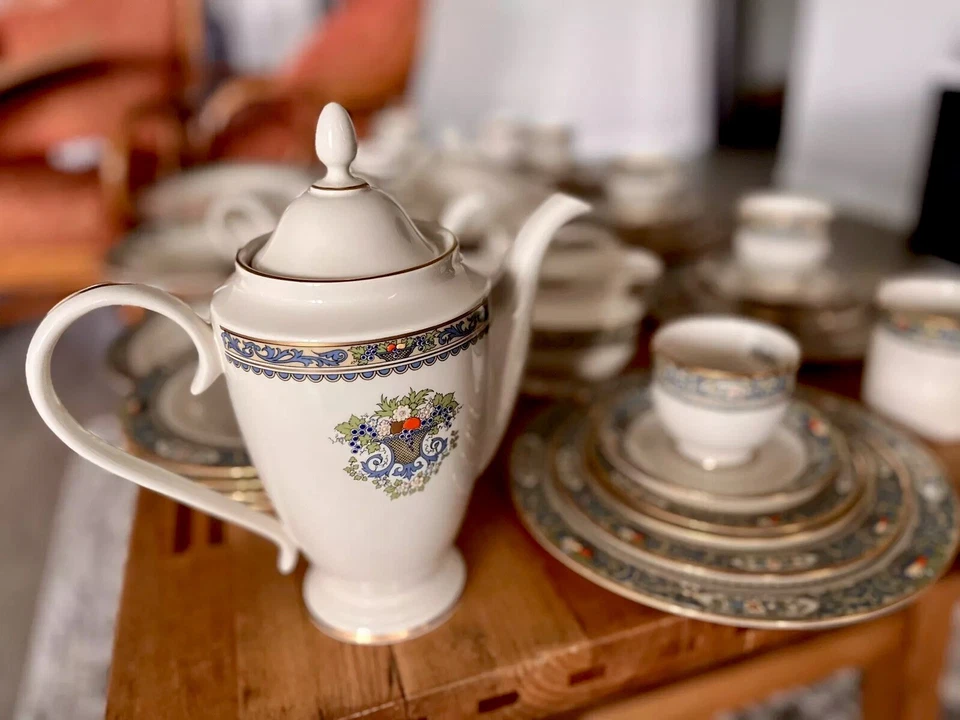
Lenox Autumn was introduced in 1918 and became one of the brand’s most popular fine china patterns. It features a cream background with gold trim and colorful floral medallions. The pattern feels formal but still warm, making it suitable for both display and dining. It has remained in production, but earlier versions are more valuable.
Full vintage sets may sell for $1,000 to $2,500 depending on condition. Individual dinner plates range from $40 to $100. Older pieces have the green Lenox mark stamped on the bottom. Autumn remains a symbol of American fine china with lasting appeal.
Delft Blue Hand-Painted Ware
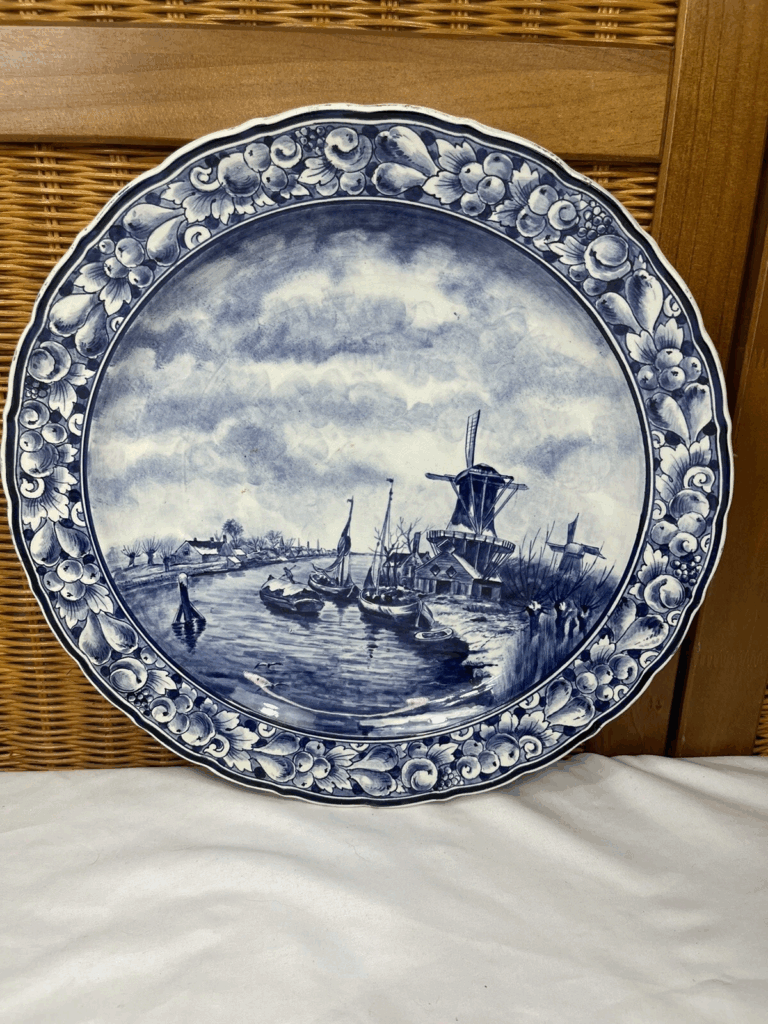
Delft Blue hand-painted dinnerware was produced in the Netherlands as early as the 1600s. The pieces are known for their white glaze and blue floral or scenic designs. Original hand-painted versions are more valued than later printed ones. Each piece often includes a maker’s mark and sometimes the artist’s initials.
Older hand-painted plates can sell for $100 to $300, while rare full sets may reach $2,000 or more. Items marked Delfts or with traditional factory stamps are worth more. Many collectors enjoy the connection to Dutch heritage and art. Delft Blue remains popular for its unique look and long history.
Minton Ancestral
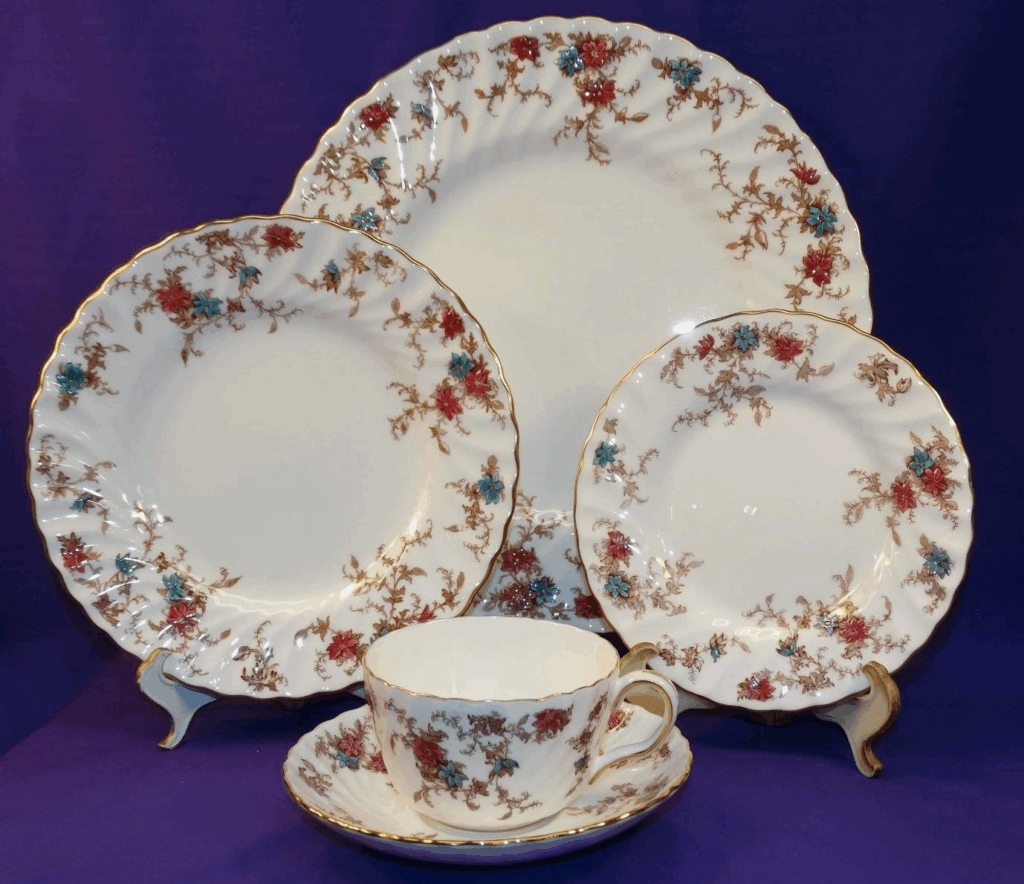
Minton Ancestral, made in England, became popular in the early to mid-1900s. The pattern features a soft ivory background with sprays of delicate flowers and gold accents. It carries a refined look that appeals to collectors and decorators alike. The design works well for both formal tables and decorative displays.
Individual dinner plates range from $25 to $60, while full sets may bring $700 to $1,200. Older pieces include backstamps with Minton and the Ancestral pattern name. Collectors often search for serving pieces to complete their collections. Minton china holds value for its fine quality and graceful designs.
Petrus Regout Maastricht
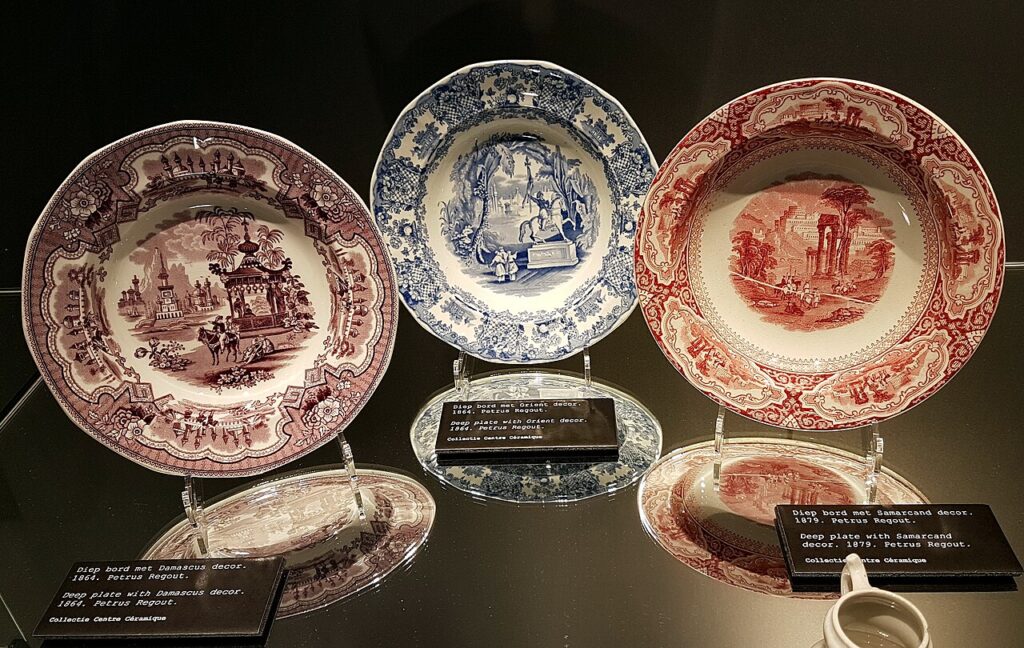
Petrus Regout was a Dutch company that started producing ceramics in the 1800s. The dinnerware from Maastricht is known for transferware patterns, often in red, blue, or brown tones. Many pieces feature pastoral scenes or floral borders. Early sets are rare and favored for their historical charm.
Single pieces usually sell for $30 to $100, with full sets reaching $800 or more. Backstamps from Petrus Regout and Co. help identify older items. This dinnerware is often collected for both display and light use. Its rustic appearance brings a touch of vintage Europe to the table.
Coalport Indian Tree
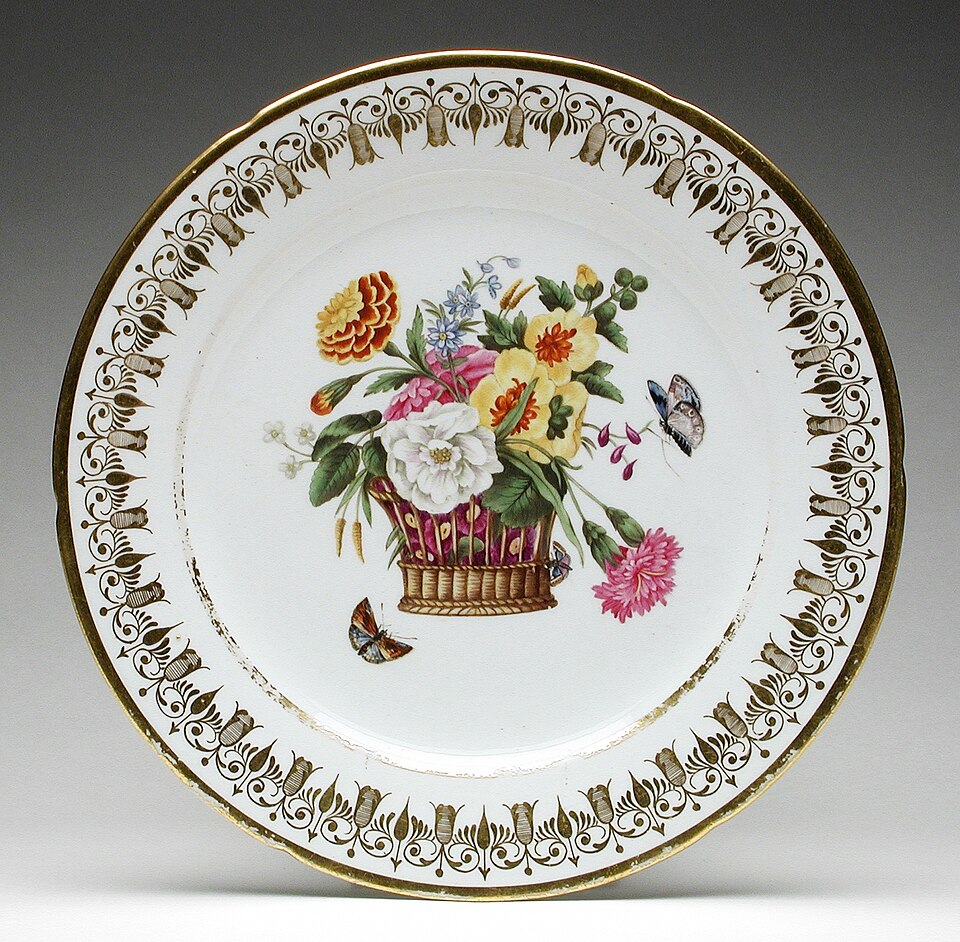
Coalport’s Indian Tree pattern dates back to the early 1800s and is based on traditional Chinese decorative motifs. It features a tree design with vibrant leaves and flowers in rich tones. The pattern became a staple for formal English dining and was made for many decades. Collectors often prefer the earlier hand-painted or early transferware versions.
Dinner plates from older sets can sell for $40 to $120, while complete antique sets may bring in $1,000 or more. Marks with Coalport England and date codes help determine the production period. The bold yet elegant look keeps this pattern popular in antique markets. Indian Tree is known for both its history and artistic style.
Aynsley Orchard Gold

Aynsley’s Orchard Gold pattern showcases hand-painted fruits in rich, detailed colors on bone china. First introduced in the mid-20th century, each piece is signed by the artist who painted it. The deep gold rims and vivid fruit designs make this pattern easy to recognize. Collectors admire the fine brushwork and bold colors.
Prices vary, but plates often sell for $100 to $300, depending on condition and artist. Full sets or rare serving pieces may exceed $2,000. Look for signatures like D. Jones or N. Brunt, which can raise the value. Orchard Gold combines fine art with functional dinnerware.
Shelley Dainty Blue
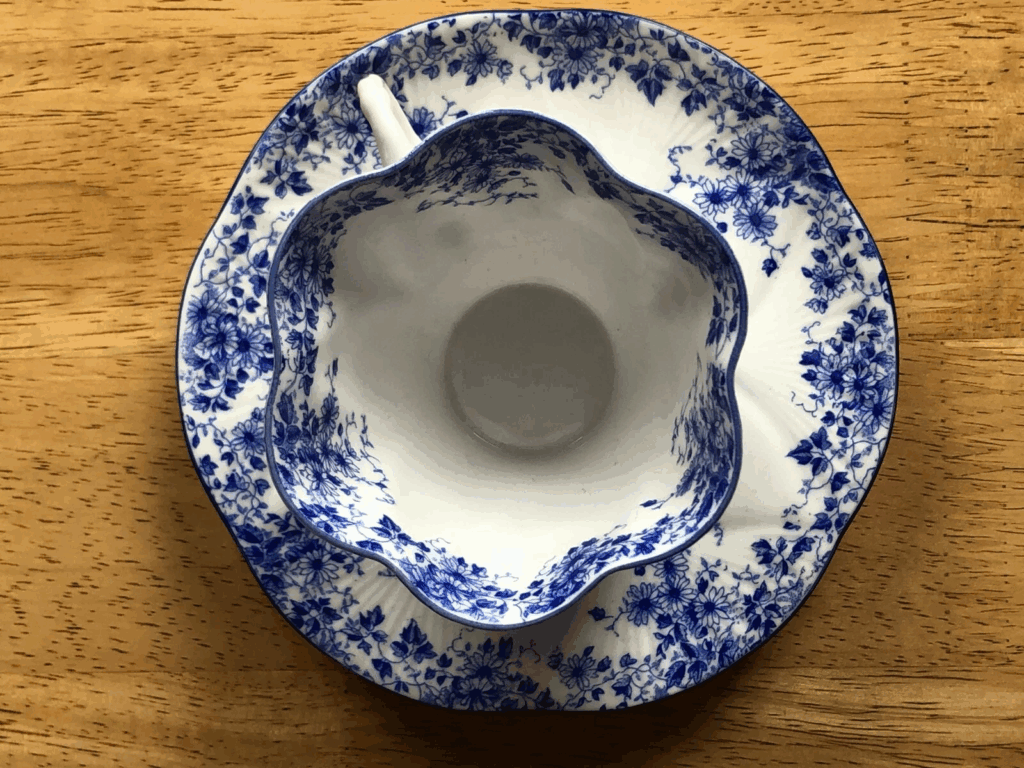
Shelley Dainty Blue features a delicate scalloped edge and soft blue floral pattern. It was produced in England from the 1940s through the 1960s and became known for its elegant style and lightweight feel. The design is both graceful and practical, making it popular for collectors who want display-worthy pieces that are still usable. Its gentle color palette pairs well with many table settings.
Dinner plates typically sell for $25 to $60, while larger sets can reach $600 or more. The Shelley backstamp helps confirm authenticity, often including the word England and the pattern name. Breakage has made complete sets harder to find. Dainty Blue remains a favorite for those who appreciate simple beauty with a soft touch.
Many collectors enjoy learning the stories behind each design. If you love detail and tradition, antique dinnerware is always worth a closer look.
This article originally appeared on Avocadu.
